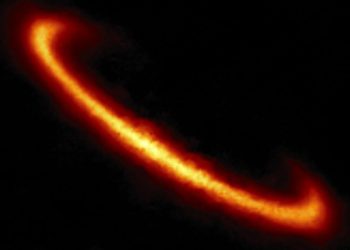For a brief moment, Earth had a celestial companion—an object no larger than a bus, affectionately referred to as a “mini moon.” This cosmic wanderer, officially named 2024 PT5, was discovered in August, captivating astronomers with its rare but temporary orbit around our planet. After spending a couple of months tracing a unique horseshoe-shaped path, the small space rock has now moved on, propelled by the Sun’s dominant gravitational pull.
However, this isn’t goodbye forever. Scientists expect 2024 PT5 to make another fleeting appearance in January before it disappears for decades.
A Brief Encounter with 2024 PT5
The mini moon’s short-lived relationship with Earth offers a glimpse into the dynamic activity of near-Earth space. Measuring approximately 33 feet in diameter, 2024 PT5 likely originated from the Arjuna asteroid group—a cluster of objects whose orbits closely mirror Earth’s. Interestingly, researchers hypothesize that this particular rock may have once been part of the Moon, dislodged millions of years ago by an asteroid collision.
Harvard astrophysicist Federica Spoto aptly described near-Earth space as a “pretty busy highway,” where countless objects like 2024 PT5 coexist in relative proximity to our planet. Though the mini moon orbited safely at a distance, its discovery serves as a reminder of the chaotic and ever-changing nature of the cosmos.
Not a True Satellite
Despite its intriguing nickname, 2024 PT5 isn’t considered a true satellite of Earth. Its orbit never fully stabilized around the planet, leading scientists to classify it as a “temporarily captured object.” Carlos de la Fuente Marcos, an astronomy professor at Universidad Complutense de Madrid, compared the asteroid to a window shopper who lingers outside a store but never enters.
In fact, such temporary captures are exceedingly rare. “So far, science has only identified two objects subjected to long captures: 2006 RH120 and 2020 CD3,” Marcos noted, emphasizing the unique nature of 2024 PT5’s brief visit.
Although 2024 PT5 never came close enough for amateur astronomers to observe with binoculars or telescopes, NASA is gearing up to monitor its next approach in January. Using advanced radar technology, the agency aims to gather more precise data about its composition, trajectory, and origins.
After its January encore, the asteroid will retreat into the vastness of space, not expected to return for another 30 years. For now, its story adds another chapter to humanity’s ongoing exploration of the celestial neighborhood.











